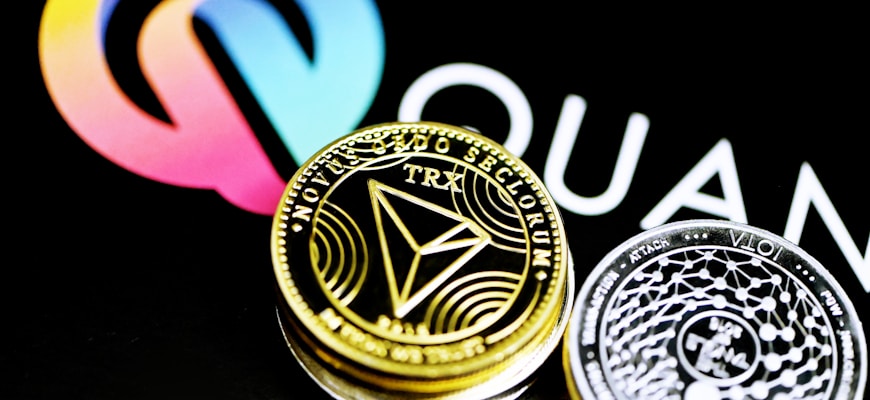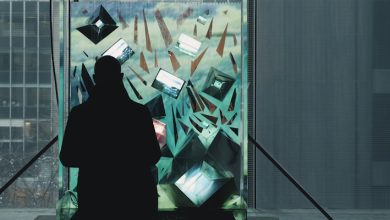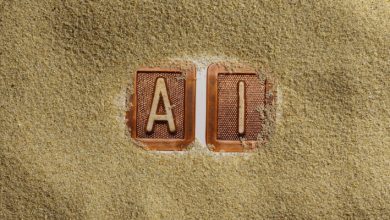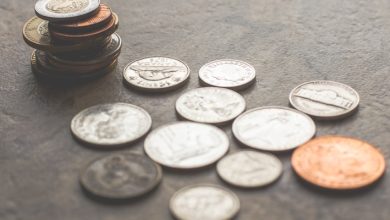The Role of NFTs in Decentralized Finance and Beyond

- Understanding the intersection of NFTs and decentralized finance
- Exploring the potential of NFTs to revolutionize traditional finance systems
- How NFTs are reshaping the concept of ownership in the digital age
- The role of NFTs in creating new opportunities for artists and creators
- Challenges and opportunities in integrating NFTs into decentralized finance platforms
- The future of finance: NFTs as a key player in the decentralized economy
Understanding the intersection of NFTs and decentralized finance
NFTs have gained significant attention in recent years, especially within the realm of decentralized finance (DeFi). This intersection between NFTs and DeFi has opened up a world of possibilities for both creators and investors alike. By leveraging the unique properties of NFTs, such as indivisibility and ownership verification, DeFi platforms can offer new ways for users to interact with digital assets.
One of the key benefits of combining NFTs with DeFi is the ability to use non-fungible tokens as collateral for loans or other financial instruments. This allows NFT owners to unlock the value of their digital assets without having to sell them outright. Additionally, NFTs can be used to represent real-world assets within the DeFi ecosystem, further bridging the gap between physical and digital assets.
Furthermore, the use of NFTs in DeFi can help address issues of liquidity and price discovery. By tokenizing assets as NFTs, users can easily trade or exchange them on decentralized platforms, opening up new markets and opportunities for investment. This increased liquidity can help drive innovation within the DeFi space and create new revenue streams for participants.
Exploring the potential of NFTs to revolutionize traditional finance systems
NFTs have been gaining traction in the financial world as a potential game-changer. These unique digital assets have the ability to revolutionize traditional finance systems by providing a new way to tokenize assets and create scarcity in the digital realm. This innovation opens up a world of opportunities for investors, creators, and developers alike.
One of the key aspects of NFTs is their ability to represent ownership of digital or physical assets in a verifiable and secure way. This means that NFTs can be used to tokenize real-world assets such as real estate, art, and collectibles, allowing for more efficient and transparent transactions. By leveraging blockchain technology, NFTs can provide a decentralized and tamper-proof ledger of ownership, reducing the risk of fraud and ensuring the integrity of the asset.
Furthermore, NFTs can also enable fractional ownership of assets, allowing multiple investors to own a share of an asset without the need for a centralized intermediary. This opens up new opportunities for investors to diversify their portfolios and participate in assets that were previously out of reach. Additionally, NFTs can facilitate the creation of new financial products and services, such as lending, borrowing, and trading, all powered by smart contracts.
Overall, the potential of NFTs to revolutionize traditional finance systems is immense. By providing a new way to tokenize assets, create scarcity, and enable decentralized ownership, NFTs have the power to democratize finance and empower individuals to take control of their financial futures. As the NFT ecosystem continues to evolve, we can expect to see even more innovative use cases and applications that push the boundaries of what is possible in the world of decentralized finance.
How NFTs are reshaping the concept of ownership in the digital age
The rise of NFTs has brought about a revolution in the way we perceive ownership in the digital realm. Non-fungible tokens have enabled individuals to truly own unique digital assets, whether it be art, collectibles, or even virtual real estate. This shift in ownership is made possible by blockchain technology, which ensures the scarcity and authenticity of each NFT. As a result, NFTs have opened up a whole new world of possibilities for creators and collectors alike, allowing them to buy, sell, and trade digital assets with unprecedented security and transparency.
Moreover, NFTs have also democratized ownership by eliminating the need for intermediaries such as galleries, auction houses, or brokers. This direct peer-to-peer interaction not only cuts down on fees and commissions but also empowers creators to retain more control over their work. In this way, NFTs are reshaping the concept of ownership by putting the power back into the hands of the individual.
Furthermore, NFTs have the potential to revolutionize not just digital art and collectibles, but also various other industries such as gaming, music, and even real estate. By tokenizing assets and representing them as NFTs on the blockchain, these industries can streamline processes, reduce fraud, and increase liquidity. For example, in the gaming industry, NFTs can enable players to truly own in-game items and characters, allowing them to trade or sell them as they see fit.
Overall, NFTs are not just a passing trend but a fundamental shift in how we conceptualize ownership in the digital age. As blockchain technology continues to evolve and mainstream adoption of NFTs grows, we can expect to see even more innovative use cases emerge across various sectors. The future of ownership is decentralized, transparent, and secure – all thanks to the power of NFTs.
The role of NFTs in creating new opportunities for artists and creators
NFTs have opened up a world of new opportunities for artists and creators in the digital space. These unique tokens allow creators to tokenize their work and sell it on various platforms, giving them a chance to reach a broader audience and monetize their art in ways that were not possible before.
One of the significant advantages of NFTs is that they provide artists with more control over their work. By creating a digital certificate of ownership on the blockchain, artists can prove the authenticity and ownership of their creations. This not only helps in preventing plagiarism but also ensures that artists receive proper credit and compensation for their work.
Moreover, NFTs enable artists to establish direct relationships with their fans and collectors. Through smart contracts, creators can set royalties for their work, ensuring that they receive a percentage of the resale value every time their art is sold. This creates a passive income stream for artists and incentivizes them to continue creating.
Additionally, NFTs have the potential to revolutionize the art world by making it more inclusive and accessible. By removing intermediaries and gatekeepers, artists can bypass traditional art galleries and connect directly with their audience. This democratization of the art market allows emerging artists to showcase their work and build a following without having to rely on the approval of art critics or gallery owners.
In conclusion, NFTs have become a game-changer for artists and creators, offering new ways to showcase and monetize their work in the digital age. By leveraging blockchain technology, artists can take control of their art, establish direct relationships with collectors, and create a more inclusive art market. As the NFT space continues to grow, we can expect to see even more opportunities emerge for artists to thrive and succeed in the decentralized finance landscape.
Challenges and opportunities in integrating NFTs into decentralized finance platforms
Integrating NFTs into decentralized finance platforms presents both challenges and opportunities. On one hand, NFTs have the potential to revolutionize the way assets are represented and traded on blockchain networks. However, there are several hurdles that need to be overcome in order to fully realize this potential.
One of the main challenges is the technical complexity of integrating NFTs into existing decentralized finance protocols. NFTs are unique tokens that represent ownership of a specific asset, such as a piece of digital art or collectible. This uniqueness makes it difficult to standardize the way NFTs are handled within decentralized finance platforms, which are typically built around fungible tokens like cryptocurrencies.
Another challenge is the regulatory uncertainty surrounding NFTs and decentralized finance. As these technologies continue to gain mainstream adoption, regulators around the world are starting to take notice. This could lead to increased scrutiny and potential restrictions on how NFTs can be used within decentralized finance platforms.
Despite these challenges, there are also numerous opportunities for integrating NFTs into decentralized finance. For example, NFTs could be used as collateral for loans, allowing users to borrow against their digital assets. This could open up new avenues for liquidity and asset management within decentralized finance platforms.
Additionally, NFTs could be used to represent ownership of real-world assets, such as real estate or stocks. This could help to bridge the gap between traditional finance and decentralized finance, opening up new possibilities for asset tokenization and trading.
The future of finance: NFTs as a key player in the decentralized economy
In the decentralized economy, non-fungible tokens (NFTs) are emerging as a key player in the future of finance. These unique digital assets are revolutionizing the way we buy, sell, and trade value on the blockchain. NFTs represent ownership of a specific item or piece of content, whether it’s art, music, collectibles, or even virtual real estate.
As the popularity of NFTs continues to grow, they are becoming an integral part of decentralized finance (DeFi) ecosystems. NFTs can be used as collateral for loans, traded on decentralized exchanges, or even fractionalized into smaller pieces for investment purposes. This versatility opens up a world of possibilities for both creators and investors in the decentralized economy.
One of the key benefits of NFTs in DeFi is their ability to provide liquidity and transparency to markets that were previously illiquid and opaque. By tokenizing real-world assets as NFTs, investors can now trade these assets seamlessly on blockchain networks, without the need for intermediaries. This democratization of finance is empowering individuals to take control of their wealth and investments like never before.
In conclusion, NFTs are set to play a crucial role in the future of finance as a key player in the decentralized economy. Their unique properties and versatility make them an attractive option for both creators and investors looking to participate in the growing world of DeFi. As blockchain technology continues to evolve, we can expect to see even more innovative use cases for NFTs that will further disrupt traditional financial systems.




